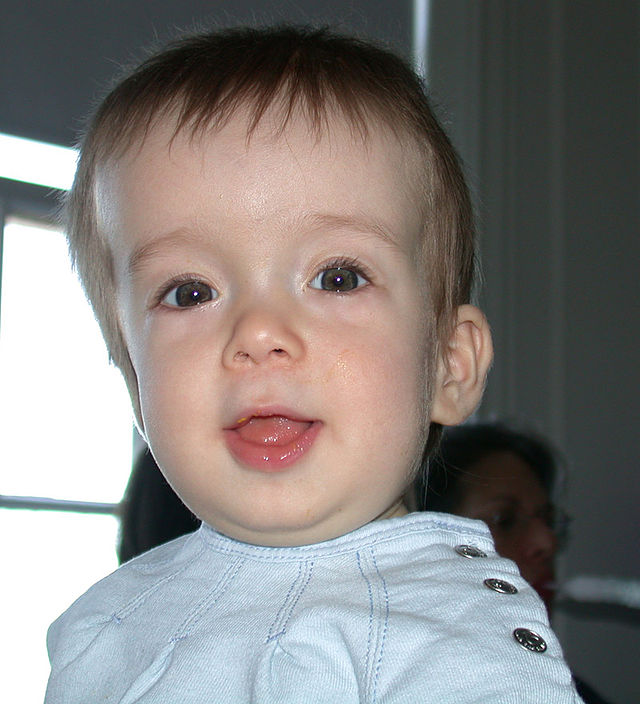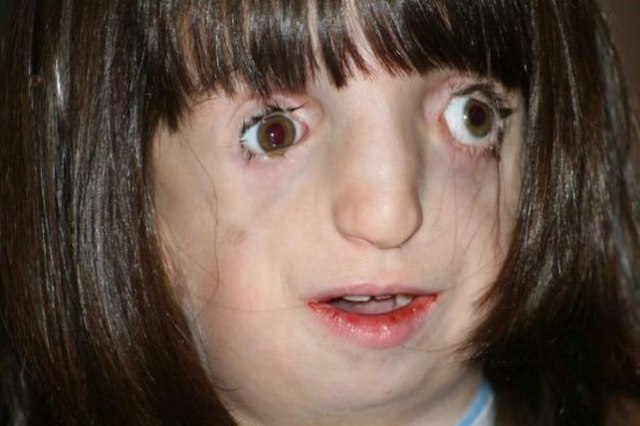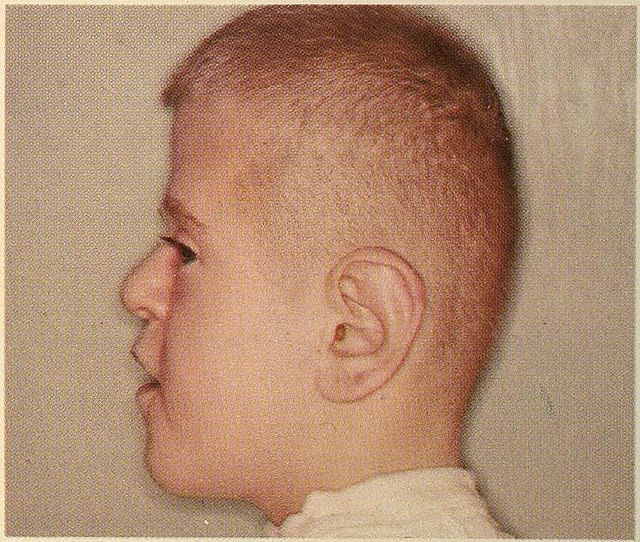Craniofacial disorders entail a wide spectrum of issues affecting the anatomy and development of the skull and face. These abnormalities, ranging from cleft lip and palate to craniosynostosis and Treacher-Collins syndrome, can have serious physical and mental consequences. Understanding the genetic links underlying craniofacial abnormalities is critical for proper diagnosis, successful care, and effective genetic counseling.
Overview of Craniofacial Disorders
Craniofacial diseases are a group of abnormalities that impact the development of the skull and facial features. These disorders can have varied degrees of affect on an individual’s appearance as well as their ability to breathe, eat, speak, and hear. Understanding the several types of craniofacial diseases is crucial for providing relevant care and assistance to those affected.
Common types of craniofacial disorders and genes involved
Craniofacial disorders are classified based on the specific anatomical regions they affect and the underlying genetic or environmental causes. The classification helps healthcare professionals diagnose and manage these conditions effectively.
Genes play a fundamental role in craniofacial development, orchestrating the intricate processes that shape the face and skull during embryonic development. Mutations or alterations in specific genes can disrupt these processes, leading to craniofacial disorders. Several key genes have been identified in association with different types of craniofacial disorders.
Studying the role of these key genes has provided valuable insights into the genetic mechanisms underlying craniofacial disorders. However, it’s important to note that craniofacial disorders are often complex and multifactorial, involving interactions between multiple genes and environmental factors.
Cleft lip and palate
One of the most common craniofacial disorders is cleft lip and palate. It occurs when the tissues forming the lip and palate do not fuse properly during fetal development, resulting in a gap or opening. This condition can lead to difficulties in feeding, speech impairments, and dental problems.
Two genes that have been extensively studied in relation to cleft lip and palate are MSX1 and IRF6. MSX1 is involved in facial development, particularly in the formation of the lip and palate. Mutations in this gene have been found to increase the risk of cleft lip and palate. IRF6 plays a role in regulating the development of the lips, skin, and palate, and mutations in this gene are associated with an increased susceptibility to cleft lip and palate.

(Source: Wikimedia)
Craniosynostosis
Another type is craniosynostosis, a condition where the bones of the skull fuse prematurely, restricting the growth of the brain. This fusion can cause an abnormal head shape, increased pressure inside the skull, and potential neurological complications if not treated promptly.
FGFR2 and TWIST1 are important genes implicated in craniosynostosis, a condition where the sutures in an infant’s skull fuse prematurely. FGFR2 mutations have been identified in individuals with craniosynostosis, disrupting the normal growth and development of the skull. TWIST1 mutations are also associated with craniosynostosis, affecting the regulation of bone development.

(Source: wikimedia)
Treacher-Collins syndrome
Treacher-Collins syndrome is a rare genetic disorder characterized by facial deformities, particularly affecting the cheekbones, jaw, and ears. Individuals with this syndrome may have underdeveloped facial bones and may experience hearing loss due to abnormalities in the middle ear.
TCOF1 is the key gene involved in Treacher-Collins syndrome, a disorder characterized by facial abnormalities including underdeveloped cheekbones, jaws, and ears. Mutations in TCOF1 impair the production of a protein called treacle, which plays a role in early craniofacial development.

Pierre Robin sequence
Pierre Robin sequence involves a combination of features including a small lower jaw (micrognathia), cleft palate, and a tongue that falls back into the throat. This can lead to breathing difficulties, feeding challenges, and possible developmental delays.
The gene SOX9 is associated with Pierre Robin sequence, a condition characterized by a small lower jaw (micrognathia), cleft palate, and breathing difficulties. Mutations in SOX9 disrupt the normal development of the lower jaw and palate, leading to the characteristic features of this syndrome.

Apert syndrome
Apert syndrome is a rare genetic disorder that affects the growth of the skull, face, hands, and feet. It is characterized by abnormal fusion of the skull bones and malformation of the fingers and toes. Individuals with Apert syndrome may also experience intellectual and developmental disabilities.
FGFR2 and FGFR3 mutations are linked to Apert syndrome, a rare genetic disorder characterized by craniosynostosis, abnormal facial features, and fused fingers and toes. These mutations affect the normal development of bones and sutures in the skull, leading to the distinctive craniofacial abnormalities observed in Apert syndrome.

Diagnosis of Craniofacial Disorders
Craniofacial disorders, characterized by abnormalities in the development of the skull and facial structures, require early diagnosis for timely interventions and improved outcomes. The diagnostic process involves both prenatal and postnatal assessments to accurately identify the specific condition and develop appropriate treatment plans.
A. Prenatal diagnosis
1. Genetic testing options:
Prenatal genetic testing plays a crucial role in identifying potential craniofacial disorders. Various methods are available, including amniocentesis and chorionic villus sampling (CVS). These tests analyze the genetic material of the fetus to detect chromosomal abnormalities and specific gene mutations associated with craniofacial disorders. Genetic counselors work closely with families to explain the risks, benefits, and limitations of each testing option.
2. Ultrasound and imaging techniques:
Ultrasound scans are commonly used during pregnancy to assess fetal development. In the context of craniofacial disorders, ultrasound can provide valuable insights into the structural abnormalities of the head and face. Detailed imaging helps identify conditions such as cleft lip, cleft palate, or craniosynostosis. Advanced techniques like three-dimensional (3D) or four-dimensional (4D) ultrasound may offer even more detailed visualization, aiding in early detection and planning for postnatal care.
B. Postnatal diagnosis
1. Physical examination and clinical features:
After birth, a thorough physical examination is performed to evaluate the newborn’s head and facial structures. Healthcare professionals assess various clinical features such as facial asymmetry, presence of clefts, abnormal head shape, or jaw anomalies. These observations, along with the baby’s medical history and family history, provide important clues for identifying specific craniofacial disorders.
2. Genetic testing and molecular analysis:
Genetic testing and molecular analysis techniques are invaluable for confirming the diagnosis of craniofacial disorders. DNA samples, typically obtained from a blood sample, are analyzed to identify specific gene mutations or chromosomal abnormalities associated with the condition. Advances in genetic sequencing technologies have enabled more precise and comprehensive testing, improving diagnostic accuracy. Molecular analysis helps determine the underlying genetic factors contributing to the disorder and may guide treatment decisions and genetic counseling for affected families.
Treatment and Management of Craniofacial Disorders
Craniofacial disorders present unique challenges that require a comprehensive and multidimensional approach to treatment and management. This article explores the various strategies employed, including surgical interventions, non-surgical interventions, and the crucial role of psychosocial support and counseling.
A. Multidisciplinary Approach:
The successful management of craniofacial disorders involves a collaborative effort from a team of healthcare professionals. This multidisciplinary approach typically includes specialists such as craniofacial surgeons, orthodontists, speech therapists, psychologists, and social workers. Each professional brings their expertise to address the diverse needs of patients, ensuring a holistic and individualized treatment plan.
B. Surgical Interventions:
Surgery plays a crucial role in correcting craniofacial abnormalities and improving both function and appearance. The specific surgical procedures required depend on the type and severity of the disorder. For example, individuals with cleft lip and palate may undergo surgeries to close the cleft, improve speech, and enhance facial symmetry. Craniosynostosis, on the other hand, may require surgical intervention to release the fused skull sutures and allow for proper brain and skull growth.
C. Non-surgical Interventions:
In addition to surgical interventions, non-surgical treatments are often an integral part of managing craniofacial disorders. These interventions can include orthodontic treatment to correct dental and jaw alignment issues, speech therapy to address speech and language difficulties, and hearing aids or assistive devices for hearing impairments. Physical therapy and occupational therapy may also be recommended to improve motor skills and overall development.
D. Psychosocial Support and Counseling:
Craniofacial disorders can have a significant impact on an individual’s emotional well-being and self-esteem. Therefore, providing psychosocial support and counseling is essential. Psychologists and social workers work closely with patients and their families to address the psychological and social challenges associated with craniofacial disorders. This support may involve individual counseling, group therapy, and educational programs aimed at building self-confidence, resilience, and coping skills.
Current Research and Future Directions in Craniofacial Disorders
Craniofacial disorders, characterized by abnormalities in the structure and development of the skull and face, present significant challenges to affected individuals and their families. However, with advancements in genetic research, the field is making exciting progress. This article explores the latest research and future directions in three key areas: genetic research advancements, potential gene therapies and targeted treatments, and emerging technologies for early diagnosis.
A. Advancements in Genetic Research:
In recent years, there have been significant breakthroughs in understanding the genetic basis of craniofacial disorders. Scientists have identified several key genes responsible for these conditions, shedding light on their underlying mechanisms. Advanced genomic sequencing techniques, such as whole-exome sequencing and genome-wide association studies, have enabled researchers to pinpoint specific genetic variations associated with craniofacial disorders. This deeper understanding of the genetic factors involved opens new doors for targeted treatments and interventions.
B. Potential Gene Therapies and Targeted Treatments:
The identification of key genes involved in craniofacial disorders has paved the way for potential gene therapies and targeted treatments. Gene therapy involves introducing functional genes into affected cells to correct genetic abnormalities. Researchers are exploring innovative approaches such as CRISPR-Cas9 gene editing to precisely modify defective genes and restore normal craniofacial development. While still in the experimental stage, these gene therapies hold promising potential for future clinical applications.
Additionally, targeted treatments aim to address specific molecular pathways disrupted in craniofacial disorders. By developing drugs that specifically target these pathways, researchers hope to mitigate the effects of the disorders and improve outcomes. This personalized approach could revolutionize the treatment landscape for individuals with craniofacial disorders, offering them tailored therapies that address the underlying genetic causes.
C. Emerging Technologies for Early Diagnosis:
Early diagnosis is crucial for effective intervention and management of craniofacial disorders. Recent advancements in imaging technologies, such as three-dimensional computed tomography (CT) scanning and magnetic resonance imaging (MRI), have greatly enhanced the ability to detect and diagnose craniofacial abnormalities during pregnancy and infancy. These non-invasive imaging techniques provide detailed visualizations of craniofacial structures, enabling healthcare professionals to identify potential issues at an early stage.
Furthermore, non-invasive prenatal testing (NIPT) has revolutionized the prenatal diagnosis of craniofacial disorders. Through analyzing fetal DNA in maternal blood, NIPT can detect genetic variations associated with these disorders, allowing for early interventions and personalized care plans.
The future holds even more exciting prospects, with emerging technologies like virtual reality (VR) and artificial intelligence (AI) showing potential in aiding early diagnosis and treatment planning. VR can create immersive simulations for surgeons, facilitating pre-surgical planning and enhancing surgical outcomes. AI algorithms can analyze medical images and genetic data, aiding in accurate diagnosis and personalized treatment recommendations.
Conclusion
In conclusion, the field of craniofacial disorders has witnessed significant advancements in genetic research, offering a deeper understanding of the underlying causes and mechanisms. This knowledge opens doors for potential gene therapies and targeted treatments that hold promise for individuals with craniofacial disorders. The identification of key genes involved in these conditions paves the way for innovative approaches like gene editing and personalized drug therapies, offering tailored treatments that address the genetic root causes. Additionally, emerging technologies, such as advanced imaging techniques and non-invasive prenatal testing, contribute to early diagnosis and intervention, improving outcomes for affected individuals.
Ongoing research and support for individuals with craniofacial disorders are of paramount importance. By continuing to invest in research, we can uncover further insights into the genetic complexities of these disorders and develop more effective diagnostic tools and treatment options. Moreover, it is crucial to provide comprehensive support for individuals and their families, addressing the psychosocial challenges associated with craniofacial disorders. By fostering awareness, understanding, and acceptance, we can create a more inclusive society that empowers individuals with craniofacial disorders to lead fulfilling lives and reach their full potential. Through ongoing research and support, we can strive for improved outcomes, enhanced well-being, and a brighter future for those affected by craniofacial disorders.
References:
- Dixon MJ, Marazita ML, Beaty TH, Murray JC. Cleft lip and palate: understanding genetic and environmental influences. Nature Reviews Genetics. 2011;12(3):167-178.
- Cunningham ML, Heike CL. Craniosynostosis syndromes and craniofacial anomalies: a review of phenotypic variation and implications for genetic counseling. American Journal of Medical Genetics Part A. 2007;143A(24):2621-2633.
- Trainor PA, Andrews BT. Facial dysostoses: etiology, pathogenesis and management. American Journal of Medical Genetics Part C: Seminars in Medical Genetics. 2013;163C(4):283-294.
- Dixon MJ, Marazita ML, Beaty TH, et al. Identification of genes and gene interactions influencing facial morphology. PLoS Genetics. 2017;13(3):e1006543.
- Koboldt DC, Steinberg KM, Larson DE, et al. The next-generation sequencing revolution and its impact on genomics. Cell. 2013;155(1):27-38.
- Paganini C, De Souza F, Sandri RM, et al. Genetic advances in craniosynostosis. American Journal of Medical Genetics Part C: Seminars in Medical Genetics. 2013;163C(4):274-282.
- Smith RJ, Bale JF, White KR. Sensorineural hearing loss in children. The Lancet. 2005;365(9462):879-890.
- Goodwin AF, Oberoi S, Landan M, et al. Craniofacial and dental development in Saethre-Chotzen syndrome. American Journal of Medical Genetics Part A. 2006;140A(7):679-686.
- Cooper GM, Shendure J. Needles in stacks of needles: finding disease-causal variants in a wealth of genomic data. Nature Reviews Genetics. 2011;12(9):628-640.
- Bayram Y, White JJ, Elcioglu N, et al. REST final-exon-truncating mutations cause hereditary gingival fibromatosis. American Journal of Human Genetics. 2017;101(1):149-156.
